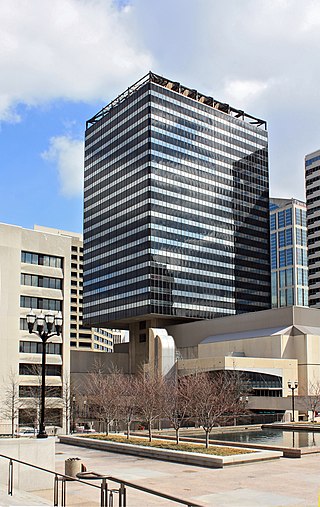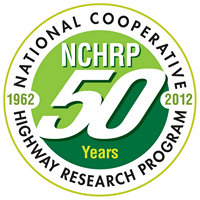
The Dwight D. Eisenhower National System of Interstate and Defense Highways, commonly known as the Interstate Highway System or the Eisenhower Interstate System, is a network of controlled-access highways that forms part of the National Highway System in the United States. The system extends throughout the contiguous United States and has routes in Hawaii, Alaska, and Puerto Rico.

A trail, also known as a path or track, is an unpaved lane or a small paved road not intended for usage by motorized vehicles, usually passing through a natural area. In the United Kingdom and the Republic of Ireland, a path or footpath is the preferred term for a pedestrian or hiking trail. The term is also applied in North America to accompanying routes along rivers, and sometimes to highways. In the US, the term was historically used for a route into or through wild territory used by explorers and migrants. In the United States, "trace" is a synonym for trail, as in Natchez Trace.

The Federal-Aid Highway Act of 1956, also known as the National Interstate and Defense Highways Act, Pub. L.Tooltip Public Law 84–627 was enacted on June 29, 1956, when President Dwight D. Eisenhower signed the bill into law. With an original authorization of $25 billion for the construction of 41,000 miles (66,000 km) of the Interstate Highway System over a 10-year period, it was the largest public works project in American history through that time.

The Federal Highway Administration (FHWA) is a division of the United States Department of Transportation that specializes in highway transportation. The agency's major activities are grouped into two programs, the Federal-aid Highway Program and the Federal Lands Highway Program. Its role had previously been performed by the Office of Road Inquiry, Office of Public Roads and the Bureau of Public Roads.

The Tennessee Department of Transportation (TDOT) is the department of transportation for the State of Tennessee, with multimodal responsibilities in roadways, aviation, public transit, waterways, and railroads. It was established in 1915 as the Tennessee Department of Highways and Public Works, and renamed the Tennessee Department of Transportation in 1972. The core agency mission of TDOT is to provide a safe and reliable transportation system for people, goods, and services that supports economic prosperity in Tennessee. Since 1998, TDOT has been ranked amongst the top five in the nation for quality highway infrastructure. It is primarily headquartered in downtown Nashville and operates four regional offices in Chattanooga, Jackson, Knoxville, and Nashville.

A metropolitan planning organization (MPO) is a federally mandated and federally funded transportation policy-making organization in the United States that is made up of representatives from local government and governmental transportation authorities. They were created to ensure regional cooperation in transportation planning. MPOs were introduced by the Federal-Aid Highway Act of 1962, which required the formation of an MPO for any urbanized area (UZA) with a population greater than 50,000. Federal funding for transportation projects and programs are channeled through this planning process. Congress created MPOs in order to ensure that existing and future expenditures of governmental funds for transportation projects and programs are based on a continuing, cooperative, and comprehensive ("3-C") planning process. Statewide and metropolitan transportation planning processes are governed by federal law. Transparency through public access to participation in the planning process and electronic publication of plans now is required by federal law. As of 2015, there are 408 MPOs in the United States.
The Low Income Home Energy Assistance Program is a United States federal social services program first established in 1981 and funded annually through Congressional appropriations. The mission of LIHEAP is to assist low income households, particularly those with the lowest incomes that pay a high proportion of household income for home energy, primarily in meeting their immediate home energy needs. The program, part of the United States Department of Health and Human Services (HHS), is funded by grants appropriated from the federal government.

Interstate 80 (I-80) in the US state of Pennsylvania runs for 311.12 miles (500.70 km) across the northern part of the state. It is designated as the Keystone Shortway and officially as the Z.H. Confair Memorial Highway. This route was built mainly along a completely new alignment, not paralleling any earlier US Routes, as a shortcut to the tolled Pennsylvania Turnpike to the south and New York State Thruway to the north. It does not serve any major cities in Pennsylvania and is mainly a cross-state route on the Ohio–New York City corridor. Most of I-80's path across the state goes through hilly and mountainous terrain, while the route passes through relatively flat areas toward the western part of the state.

The Wisconsin Department of Transportation (WisDOT) is a governmental agency of the U.S. state of Wisconsin responsible for planning, building and maintaining the state's highways. It is also responsible for planning transportation in the state relating to rail, including passenger rail, public transit, freight water transport and air transport, including partial funding of the Milwaukee-to-Chicago Hiawatha Service provided by Amtrak.

The Michigan Department of Natural Resources (DNR) is the agency of the state of Michigan charged with maintaining natural resources such as state parks, state forests, and recreation areas. It is governed by a director appointed by the Governor and accepted by the Natural Resources Commission. Currently the Director is Daniel Eichinger. The DNR has about 1,400 permanent employees, and over 1,600 seasonal employees.

Complete streets is a transportation policy and design approach that requires streets to be planned, designed, operated and maintained to enable safe, convenient and comfortable travel and access for users of all ages and abilities regardless of their mode of transportation. Complete Streets allow for safe travel by those walking, cycling, driving automobiles, riding public transportation, or delivering goods.
The Massachusetts Department of Transportation (MassDOT) oversees roads, public transit, aeronautics, and transportation licensing and registration in the US state of Massachusetts. It was created on November 1, 2009, by the 186th Session of the Massachusetts General Court upon enactment of the 2009 Transportation Reform Act.
The H-GAC 2035 Regional Transportation Plan is the long range transportation plan for the Houston-Galveston Area and serves as blueprint for further planning to be undertaken in the region over the next 30 years. The plan which was developed in a joint cooperation with Cities, Counties, Texas Department of Transportation (TxDOT) and METRO. The RTP combines research, plans and programs by various organizations into one comprehensive plan which is updated every four years. The RTP's main aim is to identify long-range transportation needs, prioritize programs and projects and to provide a forum for dialogue and regional problem solving.

In the United States, highway beautification is the subject of the Highway Beautification Act (HBA), passed in the Senate on September 16, 1965 and in the U.S. House of Representatives on October 8, 1965, and signed by the President Lyndon B. Johnson on October 22, 1965. This created "23 USC 131" or Section 131 of Title 23, United States Code (1965), commonly referred to as "Title I of the Highway Beautification Act of 1965, as Amended", and nicknamed "Lady Bird's Bill." It was the pet project of the First Lady, Lady Bird Johnson, who believed that beauty, and generally clean streets, would make the U.S. a better place to live.

The Mass Transportation Authority (MTA) is the public transit operator serving Flint, Michigan and surrounding Genesee County. It also owns and operates the inter-modal Flint station, which also serves Amtrak and Indian Trails.

The National Cooperative Highway Research Program (NCHRP) conducts research in problem areas that affect highway planning, design, construction, operation, and maintenance in the United States. Spearheaded by the Transportation Research Board (TRB), part of the National Academies of Sciences Engineering and Medicine, it is jointly supported by federal agencies, state departments of transportation, and other nonprofit organizations.
Cumberland Valley Rail Trail (CVRT) is a National Recreation Trail rail trail that follows the former Cumberland Valley Railroad rail corridor for 9.5 miles, from Shippensburg to Newville, through the farmlands of western Cumberland County in south-central Pennsylvania.
Urban freight distribution is the system and process by which goods are collected, transported, and distributed within urban environments. The urban freight system can include seaports, airports, manufacturing facilities, and warehouse/distribution centers that are connected by a network of railroads, rail yards, pipelines, highways, and roadways that enable goods to get to their destinations.

The Lebanon Valley Rail Trail (LVRT) is a National Recreation Trail. The rail trail goes from the southwestern border of Lebanon County and goes through Colebrook, Mt. Gretna, Cornwall, and the city of Lebanon. At the southern border of Lebanon County, Pennsylvania the LVRT connects with the Conewago Recreation Trail and continues for another 5.0 miles (8.0 km). The trail is partly built on the old Cornwall–Lebanon Railroad created by industrialist Robert H. Coleman in the 1880s. The trail runs 15.0 miles (24.1 km), and there are many phases in development that would extend the trail to northern Lebanon County and Jonestown. The trail features a packed stone path and paved path at many parts that traverses "Pennsylvania Dutch Country" and other scenic routes. Trail users see untouched woodlands of state gamelands, forests, and views of area fields and farms. The trail is maintained by dedicated group of volunteers, and allows for running, walking, biking, horseback riding, and cross-country skiing.

The San Francisco Bay Area Water Trail is a growing network of launch and landing sites that allow people in non-motorized small boats and beachable sail craft such as kayaks, canoes, dragon boats, stand up paddle and windsurf boards, to safely enjoy San Francisco Bay through single and multiple-day trips. The Water Trail is enhancing Bay Area communities’ connections to the Bay and creating new linkages to existing shoreline open spaces and other regional trails as well as increasing education about personal safety, navigational safety, and appropriate boating behavior near sensitive wildlife species and shoreline habitat. The Water Trail is implemented under the leadership of the California Coastal Conservancy in close collaboration with the Association of Bay Area Governments, the San Francisco Bay Conservation and Development Commission, and the California Department of Boating and Waterways.












